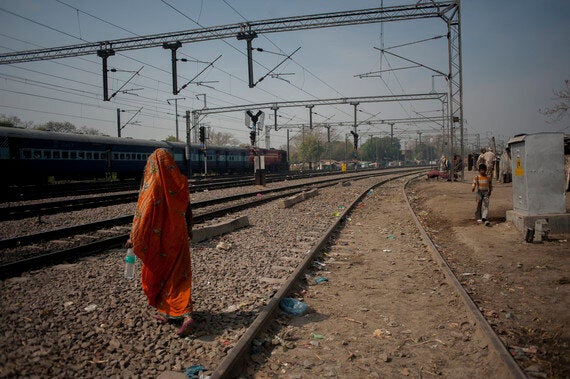Anyone who has ever parented a teenager knows their burning embarrassment if they are without the right clothes, the right trainers, the latest gadget.
But imagine for a moment that you're a 13-year-old girl who has no choice but to defecate in an open field, in front of the prying eyes of passers-by and even family members.
"I was dying every moment but nobody can feel that pain. One day, I saw my own family members, my uncle and cousins peeping from the bushes while I was squatting. I was flabbergasted. I can still remember those greedy black eyes," Bhawna, one of those teenaged girls, recalled of her first days in her extended family's village in Lucknow to researchers from WaterAid India, a charity which works to bring safe water and sanitation to the world's poorest communities.
It is a problem faced by hundreds of thousands of women and girls across India, in urban slums and rural areas. Indian government statistics suggest some 51% of unrecognised slums and 17% of recognised slums are entirely without latrines.
Women who have to walk through fields or into bushes - or even to a fetid, overflowing community toilet - to find a place to relieve themselves are immediately made vulnerable to harassment, or worse.
A spate of brutal attacks on young women in India's urban centres, most recently a young woman in Calcutta who died after being gang-raped and set on fire, have drawn world attention. But thousands of other women are preyed upon at vulnerable moments, whether it's riding a bus, walking alone or, in the case of girls like Bhawna, looking for a place to relieve themselves.
It often becomes, quite literally, a situation of risking rape to reach a toilet.

A woman walks to an open defecation spot in Kanpur, Uttar Pradesh, India. Photo by Poulomi Basu for WaterAid
"We have had had one-on-one fights with thugs in order to save our daughters from getting raped. It then becomes a fight that either you kill me to get to my daughter or you back off," one mother in a Delhi slum told researchers in a 2011 study funded by WaterAid and DfID's Sanitation and Hygiene Applied Research for Equity.
"The violence women can suffer over the simple right to go to the toilet is unacceptable. Simple, sustainable improvements can make a world of difference in supporting women to claim this most basic human right," said Neeraj Jain, chief executive of WaterAid India.
In Bhawna's case, the young woman, now 19, went on to help her mother and brothers raise the money - in part by skipping meals - to build a low-cost toilet in their home.
But women like her need more support if violence is to be addressed at its root cause. We know water and sanitation are just one aspect. Addressing violence requires shifts in society and culture, in laws, in power relationships and in economics.
Providing safe, easily accessible water and toilets can play a huge role in helping make sure these women no longer face that daily walk of fear and shame.
Governments, organisations like WaterAid, and women themselves in India are working to build simple, low-cost toilets in their own homes when possible, and to install and improve communal toilet complexes. Solutions like gender-separated community toilets which are monitored to remain clean and open for more hours can help reduce the risk.
It falls to national government and local agencies to lead the way in making these basic improvements to ensure women and their daughters are safe. It is outrageous that girls like Bhawna risk violence over this most basic of human needs. Stepping up on water and sanitation can change that.
